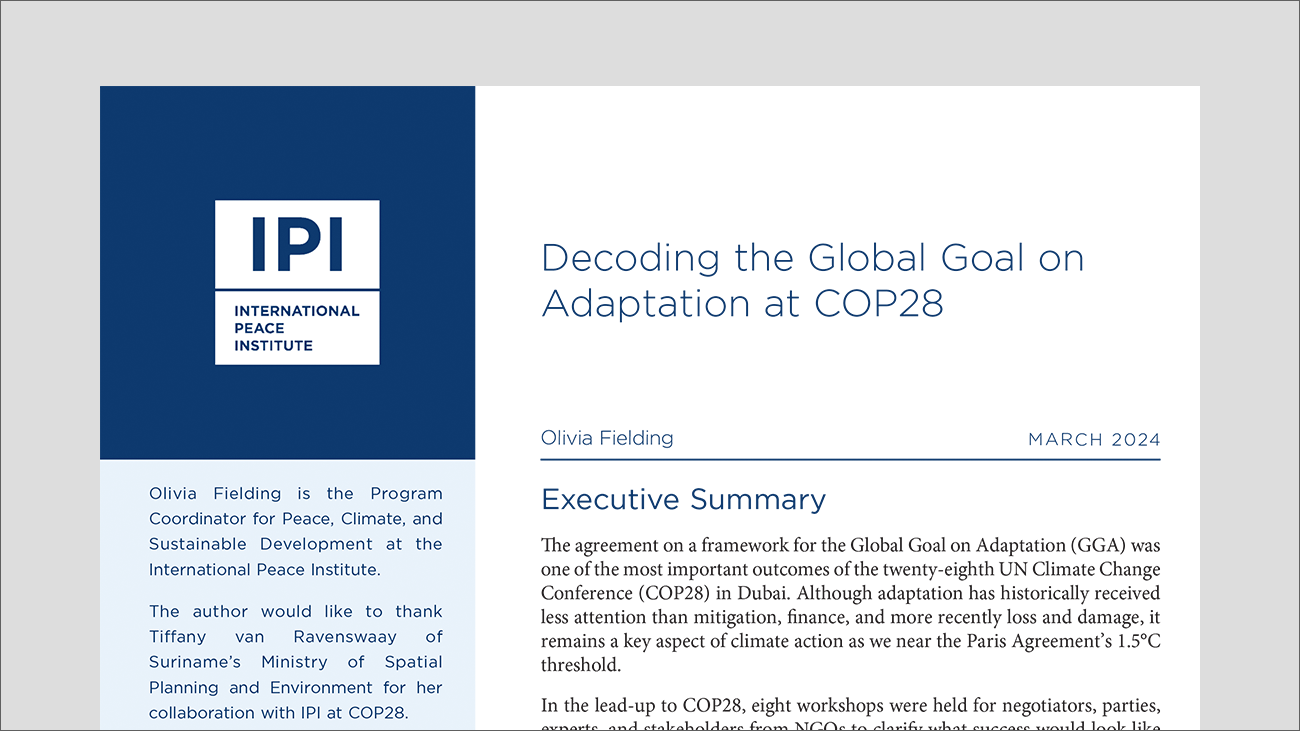
Although adaptation has historically received less attention than mitigation, finance, and more recently loss and damage, it remains a key aspect of climate action as we near the Paris Agreement’s 1.5°C threshold. This paper discusses the agreement on a framework for the Global Goal on Adaptation (GGA) as one of the most important outcomes of the twenty-eighth UN Climate Change Conference (COP28) in Dubai, providing an overview of and key takeaways from the document.
The final decision text contains language on long-term transformational adaptation, which was seen as a success by many developing countries. It also sets targets for a finalized list of thematic areas—a contentious subject and another success for many developing countries. These targets explain what success looks like, ultimately aiming for the high-level objective of well-being for people and planet, while leaving the details of achieving this objective to countries. The text also includes targets for the iterative adaptation cycle. In addition, there were a number of paragraphs on means of implementation, though many developing countries saw these as a failure, as they provide little new or significant language.
The next step will be to develop indicators for the targets in the GGA framework. Ideally, the negotiators should set the strategic direction of this process while leaving the selection of indicators to experts. It will be important to keep the list of indicators short, account for data gaps, and draw on existing indicators to the extent possible. While there is much work to be done to give life to the GGA framework adopted at COP28, it has the potential to be the new guiding light for climate action.







